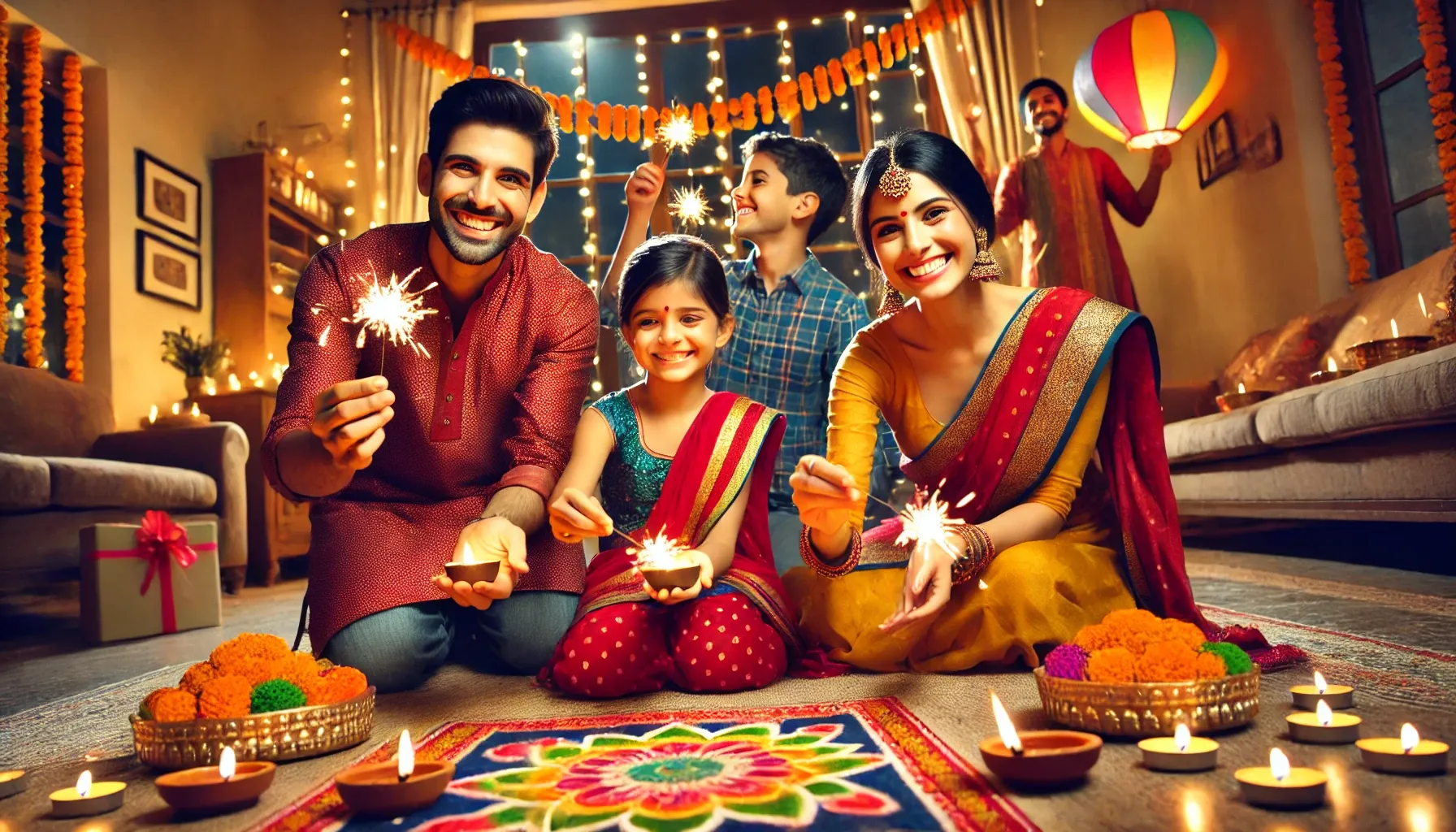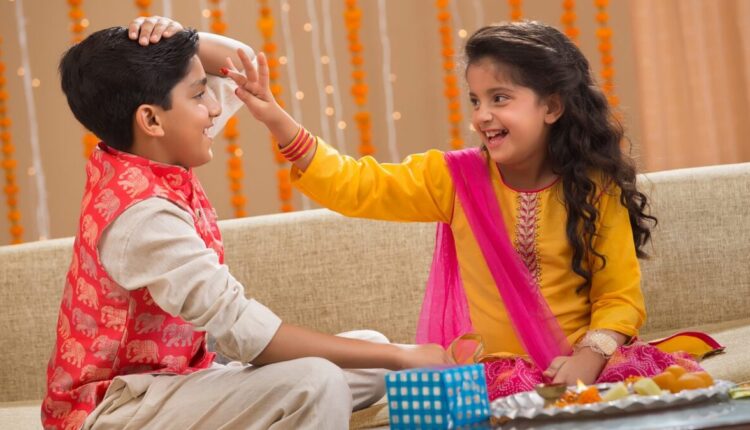Diwali: Illuminating the Soul, Uniting Cultures, Enriching the Human Spirit
Shabeer Ahmad Lone
Diwali, derived from the Sanskrit Deepavali meaning “a row of lamps,” transcends mere ritual to become an illumination of conscience. As Sri Sri Ravi Shankar profoundly reminds us, “The real lamp is you.” To light this lamp is a call to awaken-not just to light, but to truth, justice, and shared dignity. This light resonates across cultures as humanity’s enduring vow: that darkness-whether ignorance or injustice-will never define us. Each flame is a testament to the timeless triumph of the human spirit.
Known widely as the Festival of Lights, Diwali stands as one of India’s most profound cultural and spiritual phenomena, yet its luminous significance extends beyond geographic and religious boundaries. Rooted in ancient mythologies, philosophical traditions, and lived social practices, Diwali captures a universal yearning: the quest for light amidst darkness, knowledge overcoming ignorance, hope dispelling despair, and unity transcending division.
The festival’s enduring vitality stems from its ability to harmonize diverse narratives, rituals, and meanings, reflecting the rich mosaic of India’s faiths and communities. More than a moment of festivity, Diwali invites us to encounter the soul-not only the individual’s inner light but the collective illumination that underpins human interconnectedness and pluralism.
Contemporary scholars like Diana Eck and Wendy Doniger highlight Diwali as a living symbol of India’s pluralistic ethos, where diversity coexists with profound spiritual unity. Amid globalization, digital mediation, and ecological challenges, Diwali remains a vital prism to explore themes of coexistence, ecological responsibility, gender equity, and the dynamic negotiation between tradition and modernity.
Diwali’s pluralism is vividly expressed in its interfaith celebrations. Hindus mark Rama’s return to Ayodhya as the victory of dharma over adharma; Jains observe Mahavira’s liberation; Sikhs commemorate Guru Hargobind’s release symbolizing justice; and Newar Buddhists perform rituals of cosmic renewal.
Diana Eck describes this as India’s “pluralistic public square,” where traditions coexist and enrich one another. As community leader Manju Jain reflects, “Diwali brings us together-beyond neighborhoods and religions-reminding us that the light we kindle is a promise of shared respect and hope.” Such lived pluralism makes Diwali a beacon of social harmony amid diversity.
To light the lamp is to awaken the conscience—to seek truth, justice, and shared dignity. Diwali reminds us that darkness, whether ignorance or injustice, can never define the human spirit.
At its heart, Diwali kindles the inner light of awareness and compassion. Beyond fireworks and grandeur, it unfolds in acts of kindness, mindful rituals, and respect for all beings. By honoring diverse traditions, it fosters social harmony and ecological mindfulness, transforming external brightness into lasting inner illumination. True Diwali celebrates unity in diversity, ethical renewal, and the shared human journey from darkness to light.
Across the rich tapestry of literary and mystical traditions, Diwali’s lights transcend the ephemeral glow of celebration to embody enduring symbols of inner awakening and cosmic harmony. In Urdu and Hindi poetry, luminaries such as Kabir, Mir, and Tulsidas invoke the diya not merely as a lamp but as a fragile yet resolute flame guiding the soul’s passage from darkness to divine illumination, from ignorance to wisdom, and from despair to hope.
This poetic vision is deeply intertwined with the ancient spiritual ethos of the Vedas and Upanishads, where jyoti (light) signifies the primal cosmic principle that sustains and transforms all existence. The Rigveda venerates Agni—the sacred fire—as the divine intermediary, a purifier and messenger between the earthly and the celestial realms, embodying transcendence and renewal. The Upanishads elaborate on this symbolism, portraying light as the luminous essence of Brahman, the infinite ultimate reality, and the inner flame that directs the atman (individual self) on its quest toward moksha (liberation from the cycle of birth and death).
Hindus, Jains, Sikhs, and Buddhists each find sacred meaning in Diwali, proving that light unites where doctrine divides. It is India’s pluralistic public square, radiant with shared hope.
This mystical radiance is further reflected across Jain, Sikh, and Buddhist traditions, where light becomes a metaphor for jnana (wisdom), ananda (bliss), and spiritual emancipation. The delicate interplay of shadow and illumination in Diwali’s ritual and imagery beckons practitioners beyond the visible, inviting a profound encounter with the invisible realms of consciousness and truth. Through the seamless fusion of poetic expression, scriptural profundity, and mystic insight, Diwali’s lights emerge as timeless emblems—beacons of transformation, unity amidst diversity, and the sacred human aspiration toward transcendence and universal truth.
Philosophically, Diwali invites reflection on Indian spiritual concepts—moksha (liberation), karma (ethical action), and samsara (cycle of rebirth). Lighting the diya becomes a metaphor for igniting the inner spark that transcends suffering and ignorance. This symbolism resonates across Hindu, Jain, Sikh, and Buddhist thought, merging the Upanishadic pursuit of self-realization with the Buddhist path to enlightenment. Seen thus, Diwali is cosmic renewal-a beatific illumination bridging the human and divine, the personal and universal.
Diwali also celebrates the union of science and art. Its lamps symbolize knowledge triumphing over ignorance; rangoli patterns weave communal harmony through geometry and vibrant color. Timed by lunar cycles, the festival aligns with cosmic rhythms, while its sensory richness—fragrant incense, fireworks, chants—ignites joy and shared identity. Here, nature’s laws and human creativity illuminate the soul together.
From the Rigveda’s sacred Agni to the verses of Kabir and Tulsidas, the light symbolizes the human journey from ignorance to wisdom, from despair to divine awakening.
Gender dimensions enrich Diwali’s social meaning. Traditionally, women lead rituals and create rangoli to invite blessings. Yet feminist critiques examine how these roles both empower and confine within patriarchal structures. Contemporary voices like artist Anjali Mehta use rangoli to advocate gender equity and environmental awareness, reflecting Diwali’s evolving nature-rooted in heritage yet responsive to social change.
Economically, Diwali fuels vibrant commerce-from sweets and gifts to artisanal crafts-sustaining livelihoods but also raising concerns about consumerism, inequality, and spiritual dilution. Marginalized communities often face barriers to full participation, underscoring persistent social disparities. Thus, Diwali also prompts reflection on material prosperity versus spiritual fulfillment.
Culturally, Diwali’s artistic expressions-rangoli, devotional music, theatrical narratives, and communal dance-transmit heritage and identity across generations. In diasporic contexts, these arts foster belonging and multicultural dialogue, underscoring Diwali’s global resonance.
Interfaith dialogue is central to Diwali’s modern social significance. It offers space for shared celebration and mutual respect, though tensions arise at times. Political appropriations remind us that pluralism requires active cultivation. Initiatives like Delhi’s “Light of Harmony,” which brings together Diwali and Eid festivities, exemplify efforts to harness the festival’s unifying power.

The digital age has globalized Diwali through virtual ceremonies, storytelling, and social media, engaging diasporas and youth worldwide. Environmental consciousness, propelled by movements like EcoFriendlyDiwali, challenges traditional fireworks with sustainable alternatives, reflecting ethical reflection and collective responsibility.
Environmental concerns catalyze innovation and ethical re-evaluation. Fireworks’ pollution and health impacts have led communities to adopt quieter, cleaner celebrations, like laser shows and eco-friendly decor. Such shifts highlight Diwali’s capacity to honor tradition while responding to urgent ecological imperatives.
Psychologically, Diwali promotes emotional well-being, social bonding, and hope. Rituals of cleansing, forgiveness, and generosity foster catharsis and community cohesion. Scientific studies affirm light’s positive effects on mood and cognition, making Diwali a festival that nurtures both individual and collective mental health.
Politically, Diwali’s history intertwines with Indian nationalism and identity formation during colonial and postcolonial periods. These layers enrich understanding of its socio-political dimensions and cultural significance.
Ritual theory reveals how Diwali’s symbolic acts enact social, moral, and cosmic order. Lighting lamps, sharing sweets, and communal prayers are vital for sustaining cultural memory and social cohesion, reaffirming Diwali’s enduring vitality.
In the face of suppression, alienation, and injustice, Diwali stands as a luminous act of resistance. Its light is not spectacle but sacred insistence: that truth shall not be buried, dignity cannot be extinguished. The simple diya flame becomes a quiet, nonviolent uprising, a refusal to surrender humanity. Diwali reminds us that true illumination lies in conscience, solidarity, and courage amidst darkness. It is a vow that even in the deepest night, light endures.
Beyond India, Diwali resonates globally. Its light echoes Hanukkah’s resilience, Christmas’s hope, Ramadan’s mercy, Vesak’s awakening, and every candle lit in vigil or resistance. Across faiths and cultures, it symbolizes a shared human vow: darkness will never prevail. The lamp endures not as imitation, but as kinship in light.
Diwali is a living tradition-dynamic and evolving-reflecting the complexities and aspirations of the human spirit. Far from a static relic, it engages contemporary political, environmental, and social challenges while nurturing timeless values of renewal, unity, and light. Its rituals, narratives, and arts sustain cultural memory and inspire social cohesion and ethical awakening. By embracing diversity without erasing difference, Diwali models inclusive, dialogical, transformative pluralism. Its power lies in inspiring personal insight and collective harmony.
In today’s fragmented world, Diwali’s luminous message of hope and interconnectedness is both timeless and urgent. It invites all-regardless of faith or background-to kindle the inner light that unites humanity in a shared journey. Through this enduring festival, we witness not just the illumination of lamps but the illumination of the soul, revealing a profound vision of coexistence, resilience, and collective flourishing. As Wendy Doniger eloquently states, “Diwali is a luminous celebration of life’s enduring light, where myth, history, and human aspiration converge in a shared quest for meaning and renewal.” Embracing Diwali’s radiant spirit calls us to foster a more compassionate, enlightened, and inclusive world.
Shabeer Ahmad Lone, from Bandipore, is a writer and researcher whose interdisciplinary work spans history, literature, philosophy, science, mysticism, religion, and art, engaging with cultural pluralism, spiritual depth, and pressing social issues. He can be reached at shabirahmed.lone003@gmail.com


Comments are closed.